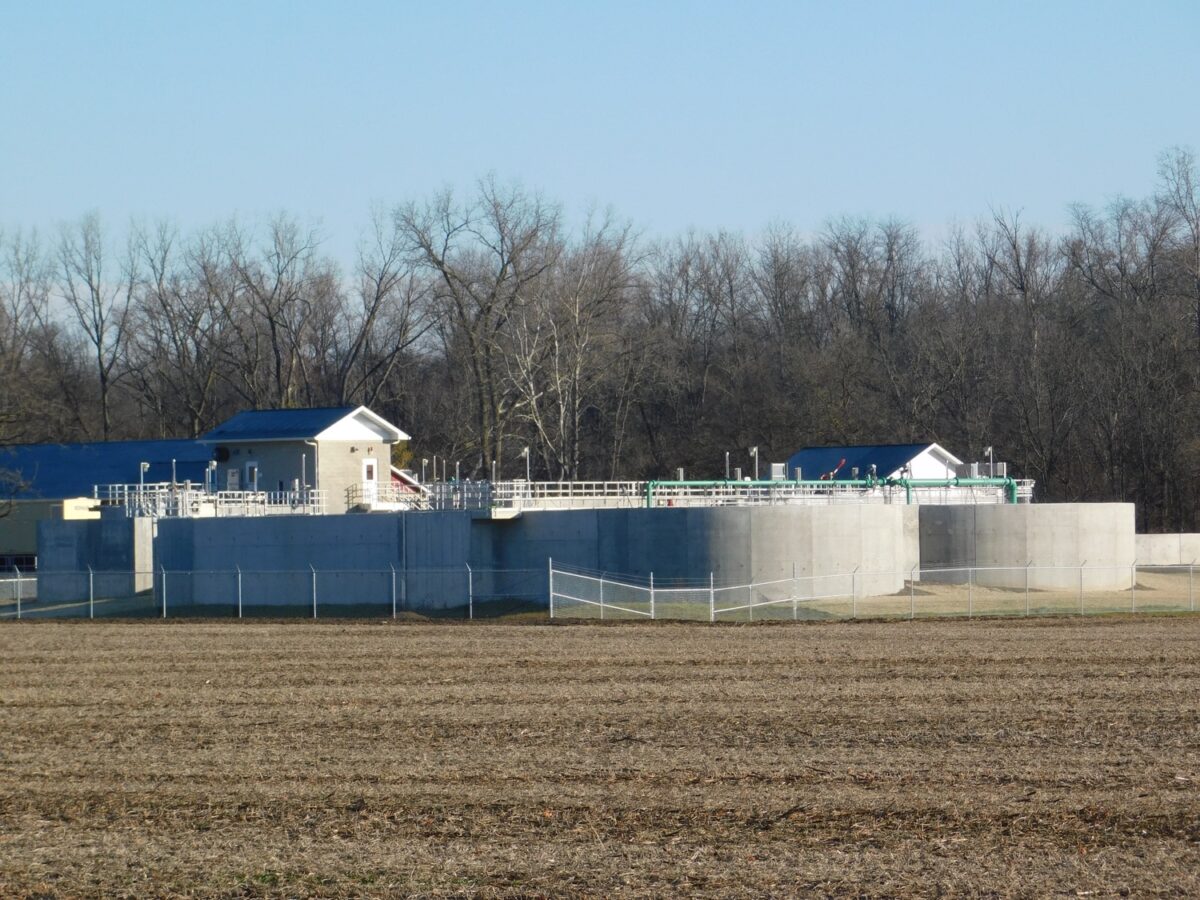Concerned about what they describe as a “horrible” odor just east of downtown Cambridge City, half a dozen residents attended a meeting to ask officials what is being done to solve it.
An odor developed in the fall that some say they can begin smelling near the first block of West Main, and it intensifies when heading east for several blocks.
After a few years of discussions in the late 2010s, talk about wastewater and sewage had diminished in town since Western Wayne Regional Sewage District finalized its plan to build a larger treatment plant that could meet the growing needs of residential and Gateway Industrial Park customers.
That plant has since been built on another section of the property at 200 S. Plum St. in Cambridge City, and treatment began last March with the new equipment. The larger plant can process as much as 1.8 million gallons per day.
WWRSD board President Susie Dungan told those attending its Dec.18 meeting that its treatment plant “is working just fine.”
“We’ll do our very best to get this figured out for you,” she told the audience, noting that WWRSD is working with the district’s largest customer, SugarCreek Packing Co., to see if the issue can be found and resolved.
Officials from SugarCreek, located in the industrial park along Indiana 1, are investigating whether its wastewater from food processing is contributing to or causing the odor.
WWRSD board member and Main Street resident Amy Ervin said she didn’t notice any smell during the transition to the new plant. However, on the last nice evenings of late fall, family members would say they couldn’t sit on their porch because of the odor and went inside.
Ervin said the new plant isn’t unusual and follows standard protocol for wastewater treatment.
The new treatment plant still has quite a bit of capacity remaining, so the odor is not caused by an overflow issue, WWRSD officials said.
Dungan said she didn’t disagree with a speaker who said that a portion of the town “smells horrible.”
Ron Holbrook, who works in corporate affairs for SugarCreek after managing the Cambridge City plant for five years, said its officials are aware of the odor and are working to find temporary and long-term fixes.
Holbrook said the company wants to be a good partner to the community and to WWRSD, and consultants and engineers are investigating whether anything SugarCreek is doing is leading to the smell.
SugarCreek and its sister plants across the Midwest produce a variety of foods for retail and commercial food operations, such as bacon, meatballs, sausage, turkey, burgers and chicken.
Holbrook said he wasn’t prepared “to say it’s us” causing the odor, especially because nothing has changed with their processes, but acknowledged that SugarCreek is the district’s largest wastewater treatment customer.
SugarCreek treats its own wastewater before it leaves the industrial park and heads toward the regional treatment plant for additional treatment.
Because of the unexplained odor, SugarCreek is adding peroxide to its treated water to try to keep the scent under control and help solve the puzzle. If that doesn’t work, sodium nitrate will be added.
Peroxide and sodium nitrate meet standards for water treatment and are the same chemicals WWRSD uses, Holbrook said, noting that the Indiana Department of Environmental Management has approved their use.
Holbrook said adding chemicals is SugarCreek’s temporary solution, but they’d rather not do that over the long run for environmental and cost reasons. Leaders are focused on a permanent solution.
“We’ll do whatever we can,” Holbrook said. “If we can identify an issue, we’ll address it as soon as possible.”
Holbrook said SugarCreek isn’t positive what the cause might be, and said staff aren’t noticing the same smell as it pretreats the wastewater.
Although passersby might see building equipment outside SugarCreek’s plant and assume that construction could be causing the problem, Holbrook said that’s not it. Cranes are on site, but the factory’s expansion hasn’t yet begun.
SugarCreek had to wait until the sewer district’s construction was finished before it could pursue its own construction permit and prepare for more food processing capabilities, he said.
SugarCreek discharges water 24 hours a day, seven days a week after it’s pretreated, and it takes about three hours before it reaches WWRSD’s plant.
There doesn’t seem to be a pattern to concerns about the smell because some neighbors say it’s worse in the morning and some say it’s worse in the evening, Holbrook said.
One speaker said it’s like the smell “is being pumped in our house” as she and hospice workers care for a family member on Church Street, and conditions aren’t pleasant for anyone there. She said she’s noticing it being especially strong around 1 a.m. Fridays and she wonders if her own recent health issues are related. WWRSD’s manager, Michael Stuckey, said he would check it out.
Residents who attended said they want to see the issue resolved quickly so it doesn’t negatively affect their businesses, such as short-term housing through Airbnb. Another said she’s concerned about being able to recruit residents to help grow Western Wayne Schools.
WWRSD officials said they want to know if residents notice the smell has gone away as the chemicals are applied — or hasn’t changed — in the next few weeks.
If they aren’t noticing improvements, those who attended December’s WWRSD meeting indicated they’d return to future WWRSD board meetings.
WWRSD typically meets monthly at 7 p.m. on the third Monday at Golay Community Center, 1007 E. Main St., Cambridge City. For more information, call 765-478-3788.
A version of this article appeared in the January 3 2024 print edition of the Western Wayne News.

